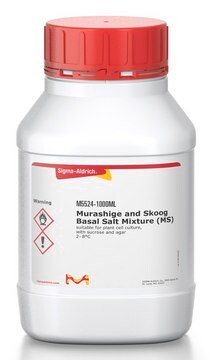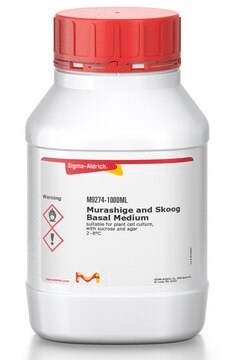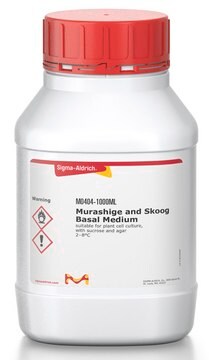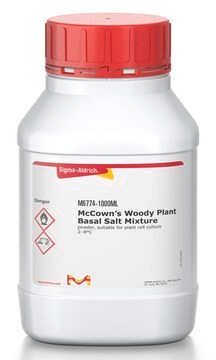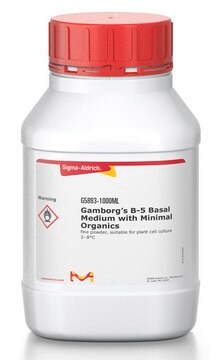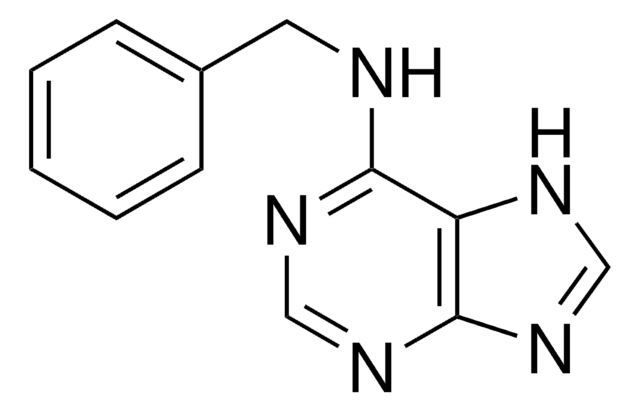M5519
Murashige and Skoog Basal Medium
powder, suitable for plant cell culture
Synonym(s):
MS0 Medium, MSO Medium, MS Basal Medium
About This Item
Recommended Products
form
powder
Quality Level
technique(s)
cell culture | plant: suitable
application(s)
agriculture
storage temp.
2-8°C
Looking for similar products? Visit Product Comparison Guide
General description
Application
Formula variant
Media Formulation
Quantity
Preparation Note
related product
Signal Word
Warning
Hazard Statements
Precautionary Statements
Hazard Classifications
Eye Irrit. 2 - Ox. Sol. 3
Storage Class Code
5.1B - Oxidizing hazardous materials
WGK
WGK 2
Flash Point(F)
Not applicable
Flash Point(C)
Not applicable
Regulatory Listings
Regulatory Listings are mainly provided for chemical products. Only limited information can be provided here for non-chemical products. No entry means none of the components are listed. It is the user’s obligation to ensure the safe and legal use of the product.
PRTR
Class I Designated Chemical Substances
ISHL Indicated Name
Substances Subject to be Indicated Names
ISHL Notified Names
Substances Subject to be Notified Names
JAN Code
M5519-50L:4548173305073
M5519-1L-LBL:
M5519-10L-LBL:
M5519-25KG:
M5519-50K3382:
M5519-50.1K:
M5519-25K:
M5519-BIBC:
M5519-10L:4548173305080
M5519-BG:
M5519-10L-PW:
M5519-50L-LBL:
M5519-1L:4548173305066
M5519-50K:
M5519-BULK:
M5519-PROC:
M5519-50KG:
M5519-50L-PW:
M5519-1L-PW:
M5519-VAR:
M5519-1L-KC:
Certificates of Analysis (COA)
Search for Certificates of Analysis (COA) by entering the products Lot/Batch Number. Lot and Batch Numbers can be found on a product’s label following the words ‘Lot’ or ‘Batch’.
Already Own This Product?
Find documentation for the products that you have recently purchased in the Document Library.
Customers Also Viewed
Our team of scientists has experience in all areas of research including Life Science, Material Science, Chemical Synthesis, Chromatography, Analytical and many others.
Contact Technical Service